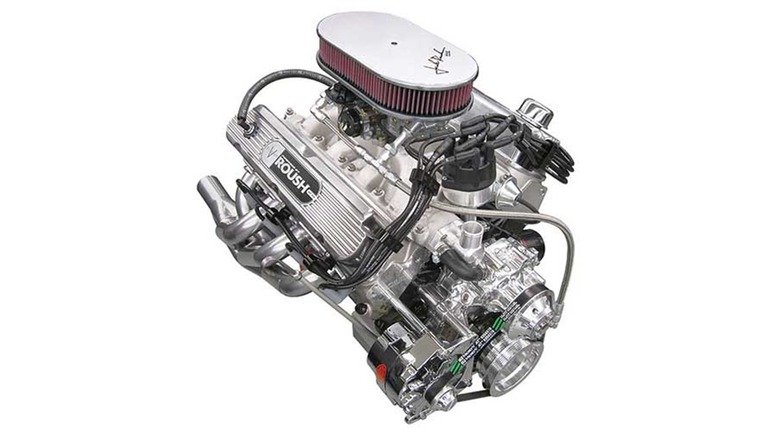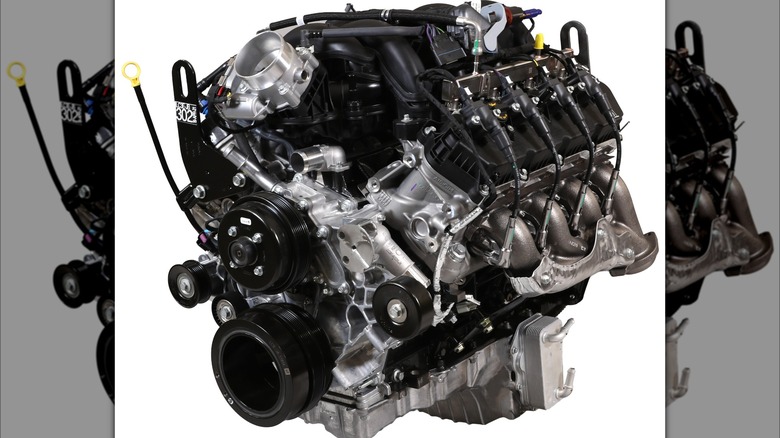What Makes A Roush Crate Engine Different From A Regular Ford Crate Engine?
With the Roush name prominently displayed on a number of performance-oriented Ford vehicles from Roush Mustangs to Super Duty trucks, it's evident the Roush name is synonymous with high performance. Jack Roush, the driving force behind Roush Performance and the crate engines the company supplies, served as an engine development engineer for Ford Motor Company before establishing Roush Performance Engineering in 1976. Under Jack's leadership, Roush Performance engines, cars, and race teams have enjoyed success in several forms of motorsports, a list that includes NHRA Pro Stock Drag Racing, SCCA and IMSA Road Racing, and NASCAR, to name just a few.
Crate engines come in a variety of sizes, with uses ranging from direct replacement of an existing engine to engine swaps and inclusion in fully custom hot-rod builds. While both Ford and Roush make powerful crate engines based on small block and big block Ford platforms, only Ford's crate engines are built to factory specifications with factory tooling by factory-trained technicians.
With Roush's racing pedigree, it's not surprising that its crate engines are predominantly only legal for use in applications where emissions don't have to be controlled. In contrast, the fuel-injected 7.3L Ford Godzilla crate engine is street-legal, as it's the same engine Ford provided in 2020 F-250 Super Duty pickup trucks.
Roush crate engines compared to Ford's
Both companies build capable engines. However, reliability and maximum allowable generated power comes down to the components within each individual engine.
Ford's affordable 7.3L Godzilla V8 crate engine features a cast-iron engine block, aluminum cylinder heads, and a strong forged-steel crankshaft. However, its cast-aluminum pistons are a weak point inside the engine that limit it to 430 horsepower and 475 pound-feet of torque.
The Roush 427 SRX crate engine, for comparison, also uses a cast-iron engine block, aluminum cylinder heads, and a steel crankshaft. However, it includes upgraded components such as robust H-beam connecting rods and forged-aluminum pistons designed to withstand the 480 hp and 500 lb-ft of torque it generates.
Another comparison, though, has Ford coming out on top. Ford Performance offers a 655-horsepower 572-cubic-inch crate engine built on the 385 big block platform with 710 lb-ft of torque. The 572 crate engine features a Scat forged-steel crankshaft, forged-aluminum Diamond Racing pistons, and forged-steel H-beam connecting rods. The comparable Roush 588-cubic-inch big block, meanwhile, has similar internal components but produces only 630 hp and 690 lb-ft of torque.

